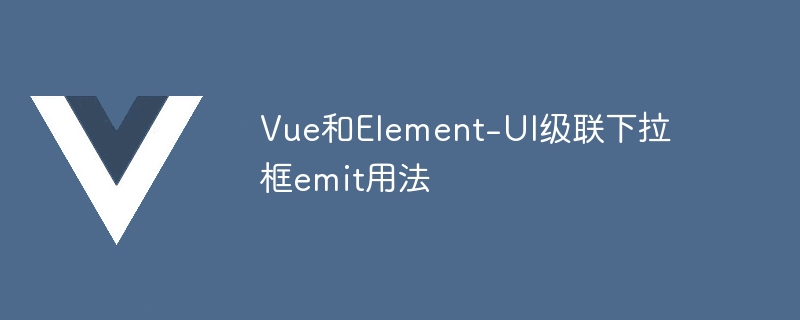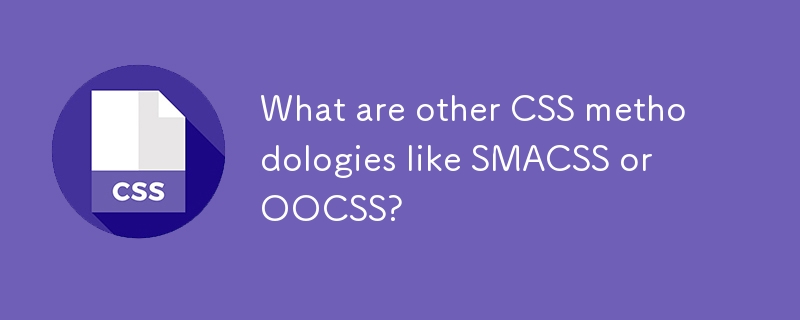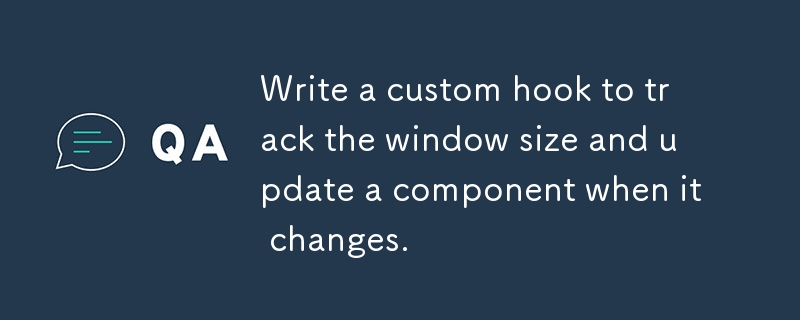Found a total of 10000 related content

How to dynamically add menu items to the layui menu
Article Introduction:Dynamically adding menu items in Layui can be achieved through the following steps: 1. Get menu container; 2. Create menu item elements; 3. Set menu item attributes; 4. Add to menu container; 5. Refresh Layui component. Through these steps, menus can be flexibly generated based on user permissions or business logic to improve the user experience and performance of the application.
2025-05-16
comment 0
590

Brighten Up Your Astro Site with KwesForms and Rive
Article Introduction:This article demonstrates how to integrate KwesForms and Rive to create dynamic, interactive forms within Astro websites. Custom events trigger Rive animations based on form actions, enhancing user experience.
The process involves configuring KwesF
2025-02-08
comment 0
1022

How to dynamically add options to the layui radio box
Article Introduction:Dynamically adding radio box options in Layui can be achieved through the following steps: 1. Get the form element, 2. Create a new option, 3. Insert a new option and re-render with form.render('radio'). Through these steps, forms can be dynamically updated based on user interaction or backend data, improving application flexibility and user experience.
2025-05-16
comment 0
721

What are controlled and uncontrolled components in React forms?
Article Introduction:In a React form, controlled components use React state to manage data, while non-controlled components rely on DOM to process data. 1. The controlled component controls the input value through the state. Each user input will trigger the event update status and can verify or format the data in real time; 2. The uncontrolled component uses ref to obtain the DOM value, which is suitable for obtaining data only when submitting or integrating with third-party libraries; 3. The selection is based on whether the form data needs to be fine-grained and real-time interaction.
2025-07-09
comment 0
707

What are slots in Vue?
Article Introduction:The default slot is used to insert a single content, and the content passed by the parent component will be directly filled in the location of the child component; 2. The named slot implements multiple insertion points through the name attribute and v-slot instructions, so that the content can be inserted into different areas of the child component; 3. The scope slot allows the child component to pass data to the parent component through the slot prop. The parent component can custom render content based on this data, thereby achieving logical separation from display. Slots are the core mechanism in Vue to realize content distribution and flexible reuse of components.
2025-07-24
comment 0
453

How to use .native modifier in Vue 2 events?
Article Introduction:In Vue2, .native is a modifier used to listen for native events of the component root element. It is suitable for scenarios where native DOM events need to be directly bound, such as clicking on component containers, processing form input underlying events, or achieving special interactive effects. 1. Native can only be used on custom components, not ordinary HTML tags; 2. If the component has multiple root nodes, .native will be invalid; 3. Not all events are suitable for use with .native, and some interfaces should be exposed through $emit. Alternatives include: listening within the component and throwing events from $emit, batch binding using v-on object syntax, and avoiding multiple nodes to support .native. Although .native is convenient, it is recommended to use $e first.
2025-06-28
comment 0
727

yi framework usage tutorial exchange
Article Introduction:The YI Framework is a PHP framework based on the MVC architecture designed to build fast and scalable web applications. It provides the following features: MVC architecture: Separate the data layer, user interface, and business logic. URL routing: Map the URL to the controller and the operation. Database Operations: Simplify database interaction through ActiveRecord mode. Form processing: Provides form verification and processing support. Extensibility: Can be extended by creating custom modules.
2025-04-18
comment 0
927

How to set default selections in the layui radio box
Article Introduction:Setting the default selection of the radio box in Layui can be achieved through the following steps: Use the checked property of HTML to directly set the default selection. Dynamically set default selections with JavaScript and re-render the form using layui.form.render('radio'). This method not only improves the user experience, but also flexibly sets default values ??based on back-end data, and is suitable for various dynamic scenarios.
2025-05-16
comment 0
386

Container vs Presentational Components in React
Article Introduction:The Container component is responsible for data logic, and the Presentational component is responsible for UI display. Specifically: 1. The Presentational component receives props and renders the UI, focusing on the display form; 2. The Container component processes data acquisition, state management and event logic, and passes data to the display component. Distinguishing between the two can help separate responsibilities, improve reusability and testing convenience. Although Hooks no longer need to be strictly split after they appear, it is still valuable to implement similar features through custom Hooks in complex projects. The methods of judgment include whether to use Redux, calling APIs, or processing business logic, etc. Exceptions can be handled flexibly without forced splitting.
2025-07-21
comment 0
668

Creating Custom Validation Rules in Laravel?
Article Introduction:There are four main ways to create custom validation rules in Laravel. First, use Rule objects to add complex conditions, such as combining database queries and ignore methods to achieve unique verification; second, encapsulate custom logic in form requests, and reuse and clear structure by rewriting rules() method; third, use closures to write instant rules, suitable for simple judgment scenarios; fourth, create custom rule classes to make the organization clearer and easier for testing and team collaboration. Developers should choose appropriate verification methods based on specific business scenarios to improve code maintainability and development efficiency.
2025-07-07
comment 0
457

Vue.js Custom Directives for DOM Manipulation
Article Introduction:Vue custom directive is a mechanism for encapsulating repetitive DOM operations, suitable for scenarios where component logic cannot meet the needs and directly operates the DOM. It realizes functions such as focusing input frames, permission control, scrolling behavior processing, etc. through hook functions of instruction objects (such as mounted and updated). Common usage examples include: 1. Automatic focus input box (v-focus); 2. Permission control command (v-permission), determining whether to remove elements based on user permissions; 3. Scroll behavior processing command (v-scroll), triggering data loading or animation through IntersectionObserver API. It should be noted that custom directives should not replace component logic and avoid
2025-07-22
comment 0
636

What is design system implementation using Vue components?
Article Introduction:The design system is implemented using Vue components, first defining the design token, then building a reusable Vue component, then creating a usage guide, and finally integrating it into the project. The first step is to set the tokens such as colors, fonts, spacing, etc., and store them in CSS variables or JS files; the second step is to create a basic component such as BaseButton that is unified naming and behavior based on the token, and use documents and tools such as Storybook for testing; the third step is to write detailed instructions on using components, including component application scenarios, form structures and examples; the fourth step is to package the component library into an NPM package or place it in a single warehouse, register global components through plug-ins and formulate code specifications to ensure smooth version control and team collaboration.
2025-07-20
comment 0
359

Advanced data validation techniques in Laravel
Article Introduction:Laravel provides a variety of advanced data verification technologies, including encapsulating complex logic using custom rule objects, reusing verification rules using form requests, implementing conditional verification through sometimes methods, and uniqueness checking in combination with database rules. First, create a custom rule class through make:rule and define logic in passes() and message() methods, so complex verification such as age limit can be achieved; second, create a form request class using make:request to separate the verification logic and directly inject it into the controller to improve the code organization structure; third, call the sometimes() method to dynamically decide whether to verify a certain field based on the input value, which is suitable for dynamic forms
2025-07-02
comment 0
163

Vue and Element-UI cascade drop-down box emit usage
Article Introduction:The Element-UI cascading drop-down box realizes parent-child component communication through custom events: the parent component listens to the change event issued by the child component and obtains the selection result. The handleChange method is used to handle selection logic and can perform different operations based on hierarchical differences. In order to obtain intermediate process information, you need to customize events inside the cascading selection box, and one event is triggered at each selection level. For large data sets, it is necessary to optimize the data loading method and use packaging components for complex logic processing. Code readability and maintainability cannot be ignored, and clear naming and annotation can help with post-maintenance.
2025-04-07
comment 0
865

Getting Started With Vue.js
Article Introduction:Quick look at the core concept of Vue.js
Vue.js is a JavaScript library based on the MVVM architecture, used to build user interfaces. It is simpler, easier to learn and flexible than AngularJS. Its core functions include:
Data binding: Supports one-way and two-way data binding, v-model instructions implement bidirectional binding, and model changes are reflected in the view in real time.
Instructions and Filters: Instructions are used to operate the DOM, and filters are used to process data.
Componentization: Create reusable custom HTML elements, improve code readability and maintenance, and use props attributes to pass component attributes.
Note: This tutorial is based on Vue.js 1.x version. Please refer to other resources for Vue 2.x tutorial
2025-02-17
comment 0
736

Extending the Properties of an HTML Element in TypeScript
Article Introduction:TypeScript Tips: Extend HTML Element Properties
This article is excerpted from "Releasing the Power of TypeScript", which will show you how to extend the properties of HTML elements in TypeScript. In large applications, we often build components based on standard HTML elements, such as custom buttons, or components that combine tags and input fields.
TypeScript requires explicit definition of properties accepted by components, which can be cumbersome for each property. To match the properties used by HTML elements in React, you can use React.ComponentProps. To exclude certain properties, you can use the Omit utility type.
To extend the properties of the component, you
2025-02-08
comment 0
508

What are other CSS methodologies like SMACSS or OOCSS?
Article Introduction:CSS methodology is designed to organize styles in a maintainable, scalable way, especially for large projects or team collaboration. BEM avoids conflicts and improves readability through naming conventions of blocks, elements, and modifiers; ITCSS organizes CSS files at common to specific levels, optimizes cascade and specific control; AtomicCSS (such as TailwindCSS) uses practical classes to reduce custom style writing, and speeds up development speed; SUITCSS adopts strict naming specifications, which are suitable for component design and JavaScript integration. Each method has its own advantages and disadvantages, and the choice should be based on project needs and team preferences.
2025-06-26
comment 0
845

How to structure large React applications for maintainability?
Article Introduction:The key to maintaining maintainability in large-scale React projects is clear structure, division of responsibilities and collaborative support, which mainly includes three points: First, organize the file structure according to functions, and centralize components, styles, services and other files based on functional modules to facilitate modification, isolation and reuse; Second, adopt appropriate state management strategies, such as ReduxToolkit or Context useReducer, centrally manage state logic and avoid unnecessary updates; Third, pay attention to component design, follow a single responsibility, control the number of props, extract general logic to custom hooks, and improve encapsulation and reusability.
2025-07-08
comment 0
934

Using Laravel Form Requests for validation and authorization
Article Introduction:FormRequest is a special class in Laravel for handling form verification and permission control, and is implemented by inheriting Illuminate\Foundation\Http\FormRequest. It encapsulates verification rules in rules() method, such as verification rules that define titles and contents, and supports dynamic adjustment rules such as excluding uniqueness checks for the current article ID. Permission control is implemented through the authorize() method, which can determine whether the operation is allowed to be executed based on the user role or the authorization policy (Policy). In addition, FormRequest also supports preprocessing data, custom error prompts and property names, such as prepareForVal
2025-07-13
comment 0
695



















